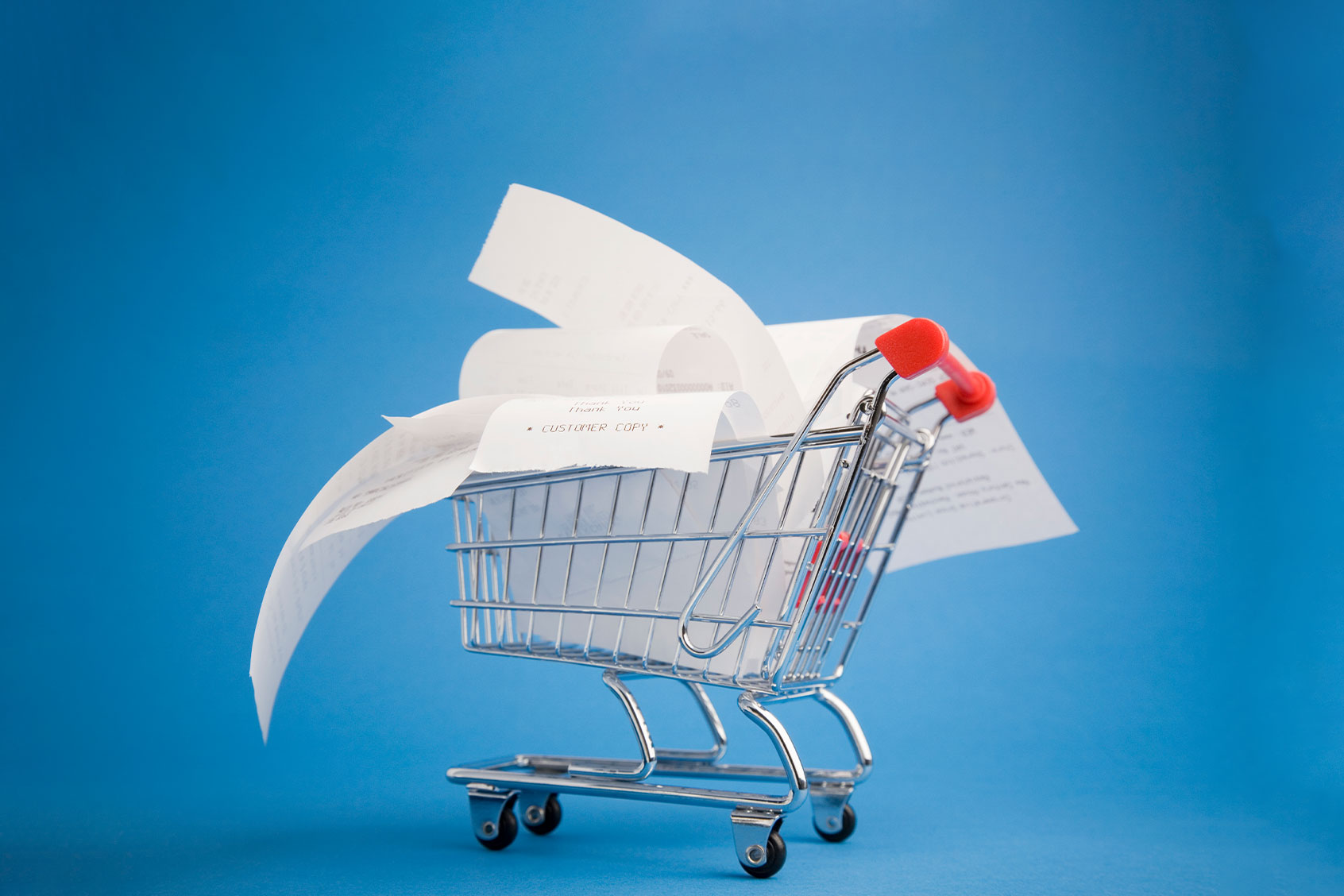Early in the pandemic, the phrase “the new normal” started to be deployed with great frequency, almost as if insisting there was some semblance of normalcy about the situation would, in fact, make it so. In the new normal, happy hours took place within the confines of the digital rectangles of a Zoom meeting room, held with the knowledge that inevitably someone’s WiFi would drop or their screen would freeze mid-sip; standing six feet apart during a conversation became a courtesy, instead of a quirk among those among us who are distrustful of close-talkers; and, for a period of time, wiping down bags of potato chips and cans of soda with antiseptic spray wasn’t an activity reserved for germaphobes.
As time has passed, some of our pandemic-era habits have worn off (even ones public health workers and scientists wish we would keep up), though there’s one area where many Americans are still adapting to our current “new normal” — the supermarket.
New data from the Bureau of Labor Statistics shows that, while the cost of groceries moderated last year, this is the first month of year-over-year acceleration in US grocery prices since August 2022. That means that, since COVID began in March 2020, the cost of food at home has jumped 24.6%, which explains why a 2024 survey found that 72% of American respondents said groceries are where they feel most affected by inflation.
As part of that survey, respondents indicated they also experienced more negative emotions — like anger, anxiety and resignation — while shopping for groceries. However, inflation hasn’t just changed how people feel about grocery shopping. It’s fundamentally changed how they actually shop, and not necessarily for the better.
For instance, grocery “shop-hopping” has become more common among customers looking for bargains.
The average American bought food at 20.7 stores in the year leading up to February, up from 16.8 in the same period in 2019 and 2020, according to data from Numerator. Similarly, May data from the grocery shopping app, Flashfood, indicates that 36% of the platform’s users “visit more than one retailer to shop” deals offered through the app, and the company estimates that a customer who shops at multiple stores saves almost three times more than those who only shop at one.
We need your help to stay independent
Even the Wall Street Journal has declared that “the era of one-stop grocery shopping is over,” though the strategizing about how to best afford groceries doesn’t stop there.
On May 14, the Urban Institute released a new study highlighting how many families in 2023 relied on credit, including Buy Now, Pay Later (BNPL) options and payday loans, and savings to meet their food needs. According to the organization, “families who were already facing food hardship were most likely to take on debt to pay for groceries, which could leave them less able to meet their basic needs in the future.”
According to the study, about 33.4% of adults managed to pay their credit card bills in full after using them for grocery purchases, while 20% only made the minimum payment and 7.1% failed to meet the minimum payment. The data also revealed that more than one in six adults utilized Buy Now, Pay Later Services over the past year, with 3.5% specifically using BNPL for groceries. Alarmingly, 37% of these BNPL users missed payments.
Additionally, 19.3% of adults tapped into savings meant for other purposes to cover grocery expenses. The survey found a notable correlation between financial hardship and the use of alternative payment methods, particularly among those experiencing severe food insecurity. Debt repayment challenges were more prevalent among those with very low food security, with nearly half relying on credit cards for groceries, but struggling to pay off their balances.
“Although access to credit and loans can provide a lifeline for families struggling to meet basic needs, relying too much on these financial coping strategies may lead to financial instability if families have a hard time keeping up with debt or do not recover from using savings not intended for routine expenses,” said Kassandra Martinchek, senior research associate at the Urban Institute.
This survey comes after another May study from the organization that found Supplemental Nutrition Assistance Program, or SNAP, benefits did not cover the cost of a modestly-priced meal in 98% of United States counties last year. As such, part of the Urban Institute’s recommendations, the Urban Institute suggests lawmakers reconsider plans to cut funding to the Supplemental Nutrition Assistance Program, or SNAP.
Martincheck continued: “To address families’ challenges meeting their basic needs, policymakers could increase access to and sufficiency of the Supplemental Nutrition Assistance Program (SNAP) and other safety net programs while also providing near-term options to help families manage current debt burdens and access affordable credit.”
Read more
from Salon Food

